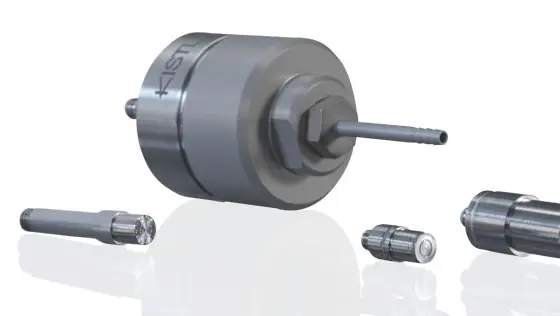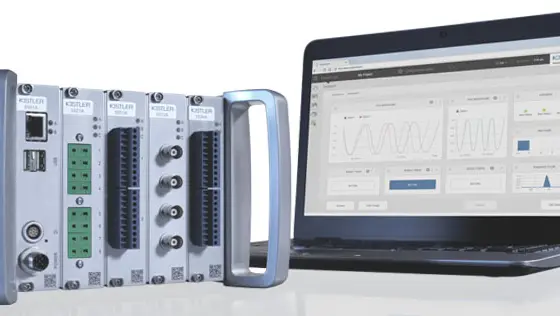What are piezoelectric pressure sensors used for?
Piezoelectric pressure sensors are the first choice for the measurement of:
- Dynamic pressures
- Small pressure pulsations at high static pressures
- Quasi-static pressure measurements in need of very small or high temperature sensors
How does a piezoelectric pressure measuring chain look like?
Piezoelectric sensors generate a tiny charge, in the order of a picocoulomb. An electronic circuit converts this into a proportional voltage signal, that can then be processed by a data acquisition system. If the electronics is an external device (charge amplifier), the piezoelectric pressure sensor is referred to as charge output or PE pressure sensor. If the electronic circuit is integrated into the sensor housing, it is referred to as a voltage output or IEPE pressure sensor (other known brand names are Piezotron, ICP, etc.).






